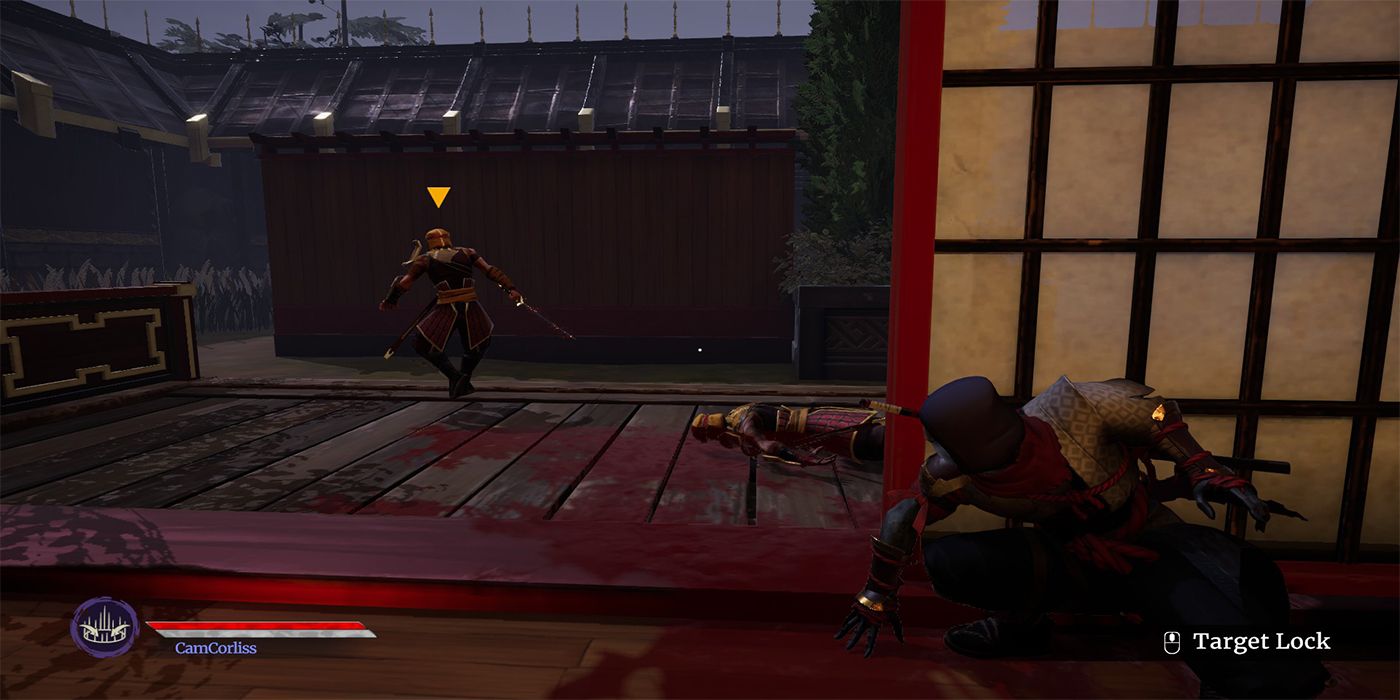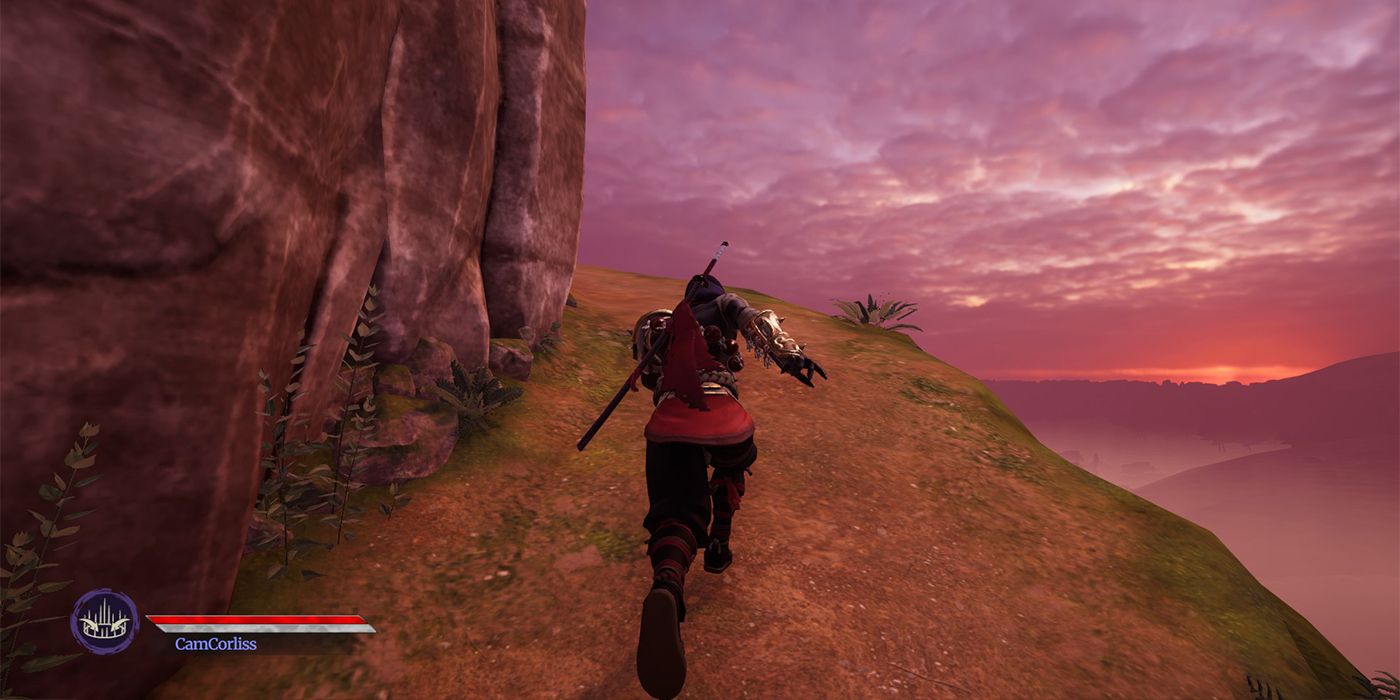
Triple-a stealth games have been stuck in a bit of a rut lately, with the genre seeing few big-name entries in the past few years. Calls to resurrect franchises like Splinter Cell have mostly gone unanswered, leaving smaller titles to fill the shoes of once-giant franchises. Enter Aragami 2, a follow-up to the original game that debuted back in 2016.
The setup for Aragami 2 is fairly simple. Players step into the role of an assassin capable of controlling shadows, using a suite of abilities to eliminate targets and complete objectives in a set of small, but open, maps. The key here is staying hidden from wandering patrols, guards, and the occasional civilian, all of which are capable of ruining the player's night if they spot them – and it's only a matter of time until they do.
RELATED: 15 Most Anticipated Games of Fall 2021

Luckily, the AI in our Aragami 2 preview seemed fairly oblivious, though in a way that walks a curious line. Essentially, players get a boost to their stealth ratings when they're in shadows, with extra unlockable bonuses that can be earned through the skill tree. It leads to situations where the player will be at most a few feet from a wandering guard, but left undetected. Other times, though, it felt like guards had eagle eyes, capable of spotting a shadow from dozens of meters away under the cover of nightfall. Of course, the build isn't final, and enemies' capacity to spot the player seems ripe for fine-tuning.
The preview's mission objectives were fairly cookie-cutter, tasking players with assassinating targets, eavesdropping on conversations, surveying locations, and a smattering of the other staples of stealth games. There's an objective board peppered with Aragami 2's maps that players use to launch missions, similar to games like Warhammer: Vermintide 2. Aragami 2 reuses locations for different missions, but it manages to keep players exploring other areas before returning long enough to avoid feeling stale.
Aragami 2 does a decent job incentivizing exploration by scattering money around each level. The currency can be used to unlock new cosmetics to customize the player with, though there's not a lot about the levels that really sticks out. Aesthetically, they're pleasing, as is Aragmi 2's overall art style, but they could do with some bolder landmarks.

Get caught while sneaking about and players will be forced to retreat somewhere safe or challenge the guards head-on. Even facing a single enemy is quite the challenge in Aragami 2, and more often than not players will be thrown into scenarios where they have to tackle multiple enemies at one time. It leads to some pretty spicy moments – moments that can be brutally difficult without proper timing and strategy – so the best bet is definitely to stick with the shadows and emphasize stealth.
That difficulty is, in part, due to Aragami 2's stamina system. Players have a small, rechargeable bar that gets whittled down when performing actions like blocking and dodging. That stamina bar gets depleted quickly, though, and when it's gone players are left without a real way to defend themselves. Enemies have similar stamina bars, but it takes a considerable amount of effort to erase them when facing off against groups. It's a bit similar to Sekiro's stamina system, for better or worse.
Perhaps the only glaring problem with Aragami 2's gameplay that we noticed during the preview was how the game handled death. Players are forced to repeat the entire mission if they die, and while they're typically bite-sized, they can require some meticulous planning to execute properly. It's a baffling decision that drags the entire experience down, especially in instances where players have almost extracted back to the game's hub world with other objectives completed. A quicksave system like that of Desperados 3 could rectify the issue, or just allowing players to jump back to their last completed objective.
RELATED: Top 10 Indie Games That Require A Lot Of Stealth

If there's one thing that's clear about the experience as a whole, though, it's that Aragami 2 is trying desperately to outdo the original's scope and scale. While we weren't able to use the feature in our preview, Aragami 2 will feature co-op. That gives it the potential for Assassin's Creed Unity-style missions, though how that will affect combat difficulty, enemy placement, and other factors remains a mystery for now.
Aragami 2's best change is how radically it's grown the depth of character customization, giving finer control over the character's appearance than the first game offered. Players can swap out their masks, body armor, legs, and weapons with new looks, which is a nice touch. Plus, the suite of unlockable skills has been greatly expanded, which does add some more strategy to missions as players progress. The real litmus test for Aragami 2 will be how well it blends the expanded skill options with co-op play when the full game is released.
This change in scope could define how Aragami 2 is received when it fully launches, and rightly so. Lince Works, the game's developer, is a small team, but still managed to carve out a name for itself with the original Aragami. Aragami 2 doesn't feel like a radical overhaul of the core gameplay mechanics, but it is building on that foundation in a couple of key ways.
It's easy to see the areas where Aragami 2 stands to improve, but it's still shaping up to be a marked improvement over the first game. Notably, Aragami 2 will be a day one Xbox Game Pass release, so those with access to the subscription service have few reasons not to dip their toes into it. Co-op play, ultimately, is the major question mark for the game, as it could add a radical new layer to the entire experience, a layer that could determine whether Aragami 2 sinks or swims.
Aragami 2 releases on September 17 for PC, PS4, PS5, Xbox One, and Xbox Series X.
MORE: The 10 Best Stealth Games That Aren't Assassin's Creed

